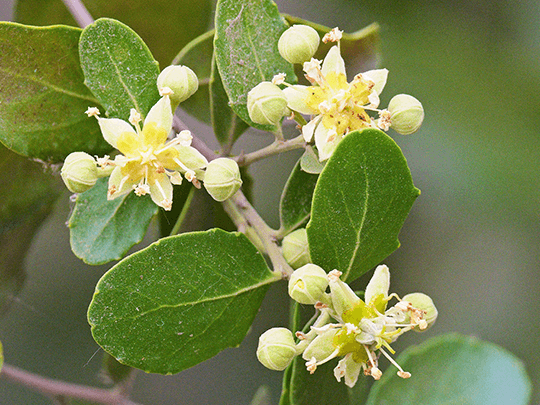Saponins - less prominent, though not less important plant ingredient - part 2
In part one, you already got first information about the plant ingredient, we are focusing on in this article. That´s talk of saponins: a diverse group of natural compounds, widely distributed in the plant kingdom and showing diverse favorable biological actions, some of which we are going to look at in this second and final part.
Versatile substance
Saponins are characterized by a wide range of applications. They are used in cosmetic industry due to their emulsifying properties, or as active surfactants, respectively. They owe their important use in pharmaceutical applications and cough medicines to their expectorant properties and hypocholesterolemic activities (11-17).

Their natural foaming agent properties explain their wide use in the food industry in food additives and in beverages. Due to their beneficial effects on modulating rumen microbiota, improving digestive processes in ruminants, they have become a valuable part of the feed additive industry as well (11-17).
Moreover, Quillaja saponins have found a relevant role as a vaccine adjuvant and immunostimulant, which led to important research in the field of vaccine development. These saponins, alone or incorporated into immunostimulating complexes (ISCOMs), can modulate immunity by increasing antigen uptake, stimulating cytotoxic T lymphocyte production (Th1) and cytokines (Th2) in response to different antigens (18).
Ammonia – more than bad air
Although Quillaja saponins have a wide range of biological properties, we would like to focus on its beneficial effects on emission reduction in animal farming - not least as this topic has recently gained more importance in livestock production. Beyond, decreasing environmental pollution and protecting animal and human health by reducing emissions is very important to us.
In this regard ammonia (NH3) plays an important role in livestock production. More than 60% of the world-wide ammonia emissions arise through animal derived food production, significantly contributing to acidification of ecosystems (19).
Ammonia has direct hazardous impact on the environment due to its toxic and alkaline properties. It is a colorless gas, mainly originating from protein metabolism, with a pungent smell and irritant and corrosive characteristics. It is rapidly removed from the circulation by the liver converting ammonia into urea in mammals (and mainly uric acid in poultry). Urea and uric acid are then excreted with urine by the kidneys. Micro-organisms can generate ammonia by enzymatic breakdown of urea and uric acid or protein fermentation (16).
Despite of the efforts to reduce ammonia in animal production via farm and waste management and optimizing feed rations, emissions are still too high. This is where phytogenic feed additives, like saponins, come into play. Several modes of action have been suggested in the literature on the saponin-induced ammonia reduction in livestock production (16,20):
1. Inhibition of the enzymes involved in uric acid and urea degradation, especially urease
2. Direct binding of ammonia
3. Anti-protozoal activity reducing proteolysis of bacterial protein by protozoa, which is of importance especially in ruminants
While the effects of saponins on ammonia have been extensively studied in ruminants, research in monogastric animals on this topic is scarce. In literature, several studies demonstrate the potential of Yucca and Quillaja saponins to reduce ammonia production both in vitro (21,22) and in vivo in ruminant systems (21).
Time for a natural solution to counteract

Furthermore, the potential of Quillaja saponins to reduce ammonia emissions in monogastrics has also been confirmed in studies at our Performing Nature Research Center. In vivo trials showed a consistent decrease of ammonia emissions by Quillaja saponins by 19-27 % in pigs and 18-65 % (32 % on average) in poultry. Therefore, reduction of ammonia by dietary addition of Quillaja saponins may contribute to the animals’ health and lowers the metabolic stress and energy expenditure for detoxification processes of ammonia in the liver. In addition, lower aerial ammonia concentrations, reduce odor emission and irritation of the respiratory tract. This can be helpful especially during winter times in barns when ventilation rates are low, accumulating aerial ammonia to problematic concentrations.
It goes without saying that high ammonia emissions from livestock endanger the environment and animal performance. Therefore, Ammonia emissions must be reduced where they occur. Even better if we can use natural substances for this purpose. That’s why we have been exploring and discovering the phytogenic universe for many years - to provide solutions that are both, natural and effective.
What about phytogenics for reducing ammonia emissions in your animal production?
By the way - to answer the question posed at the beginning of our blog article: Why can chestnuts replace detergents? Chestnuts contain saponins, and these make the brown fruits an environmentally friendly and inexpensive detergent alternative. Thus, you can use them to wash your clothes:
- Collect chestnuts
- Cut them into pieces
- Pour warm water over them (200-250ml)
- Leave overnight
- Pour off the chestnuts
- Ready detergent can be completed with a few drops of essential oil (e.g., lavender or orange) and will last in the fridge up to one week.

Elisabeth Rohrer
After her study in agriculture sciences at the university of natural resources and life sciences in Vienna, Elisabeth joined the Delacon team in December 2013 as Technical Communications Manager - a position, she always exerted with pleasure. Since 2021, her task areas have been extended and thus, she is also supporting colleagues in writing offside the technical focus as Content Manager. Elisabeth describes herself as a great animal and nature lover and prefers to spend her free time high up in the mountains with her little family, away from the hustle and bustle.











I’m very interested in this topic.
I’m very interested in this topic.